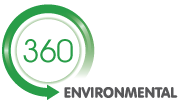The EA has published a Regulatory Position Statement 276 effectively now classing non-WEEE cable as hazardous. The full text of the email received on this is below although it is not know how widely this email was distributed. But any business that receives non-WEEE cable but only has the non-hazardous EWC code on their permit or exemption should take not of the email below and in particular, the conditions of using the RPS. The main features are:
That for a site to carry on receiving non-WEEE cable where they are not cfurrently permitted to do so, they must inform the EA if they intend to do so under the RPS.
A site using the RPS must store non-WEEE cable on impermeable surface with sealed drainage.
There is a derogation for small loads <25kg received by a site to normal consignment procedures whereby all small loads can be included under one consignment for the quarterly return.
EA email received 31 May 2023:
Changes to classification of non-WEEE waste electrical and telecommunications cable from activities involving construction and demolition, end of life vehicles, and vehicles maintenance (excluding cable from WEEE)
Research into the composition of non-WEEE waste electrical and telecommunications cable from activities involving construction and demolition, end of life vehicles, and vehicles maintenance has identified that at least 25% (potentially over 50%) of these cables exceed at least one hazard property, with very limited scope to tell the hazardous cables apart.
Therefore unless you can show that cable you have produced is non-hazardous waste with a thorough WM3 assessment you must make sure:
- waste cable from construction and demolition work is dual coded and consigned as 17 04 10* and 17 04 11
- waste cable from vehicles is dual coded and consigned as 16 01 21* and 16 01 22
As a hazardous waste, waste cable must not be mixed with other types of waste during production, carriage, storage, disposal or recovery.
A Regulatory Position Statement (RPS) has been issued to allow specific waste operations to accept these waste streams without the hazardous cable codes on their permit or exemption. For more information on the specific terms of the RPS please see: Storing and treating hazardous waste cable: RPS 276 – GOV.UK (www.gov.uk)
A reduced reporting requirement for consignee returns has been added for loads under 25kg of this waste stream where the original producer is a construction/demolition contractor, electrical contractor or vehicle maintenance facility. For more information on the specific terms of the reduced reporting requirement please see: Hazardous waste: consignee returns guidance (England) – GOV.UK (www.gov.uk)
This relates solely to the hazardous waste status of cable and does not refer to Persistent Organic Pollutants which are potentially affected by future changes to POP concentration limits. Our current position with regards to waste cables produced from construction and demolition and ELV activities may change depending on the outcome of the recent consultation https://www.gov.uk/government/consultations/amendments-to-the-persistent-organic-pollutants-pops-regulation.
For advice on WEEE cable see: Classify some waste electrical devices and components, and wastes from their treatment – GOV.UK (www.gov.uk)
